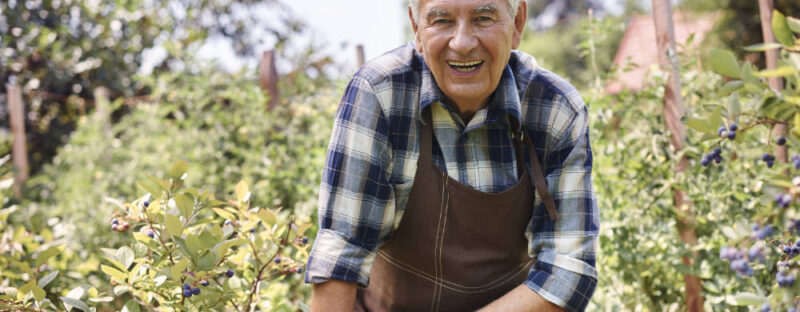By Mallory Edens
Retirement used to mean downsizing, not dreaming bigger. But now, with time and resources finally on your side, why not trade the treadmill for a wheelbarrow? Homesteading appeals to people itching to get dirt under their nails and peace in their bones. The trick is choosing a home that welcomes this new rhythm without making the future feel like a burden. You want the land to work with you, not against your knees or your back. And while that log cabin fantasy is sweet, it needs to hold up to real-life winters, both seasonal and personal.
Look past the postcard
Before falling in love with a front porch and a pasture, you’ll need to ask hard questions about the land itself. What’s its orientation, its slope, its drainage? Does it flood every spring? Is it fertile, or will you be throwing money at compost for five years? Buying land for homesteading isn’t about aesthetics; it’s about how much effort it will take to make it yield. Consider the layout too—how far are you from medical care, neighbors, or the grocery store when things go sideways?
Know your dirt and skies
You can’t grow what your soil won’t support. And all the raised beds in the world won’t fix a bad climate fit. Whether you’re eyeing goats or garlic, your success will hinge on rainfall, temperature swings, and what’s already in the ground. Good land choices depend on climate and soil considerations, especially for those new to growing outside of grocery store aisles. Don’t just test the dirt, ask the locals what takes and what dies. And never underestimate the impact of a bad drought on your good intentions.
Pick your path, not just produce
Homesteading isn’t one-size-fits-all. You might raise chickens, brew cider, keep bees, or spin your own alpaca fiber. Or maybe you sell dahlias at the Saturday market. Your land should suit your interests, not the other way around. If you’re unsure where to begin, explore which homesteading skills to master before you commit to building that elaborate greenhouse or digging out a fish pond. The more your setup matches your curiosity, the more likely you are to stick with it.
Modern comforts meet self-sufficiency
You don’t have to live rough to live right. Solar panels, greywater systems, and efficient insulation can make off-grid living surprisingly elegant. Some retirees go all in with tiny homes or passive solar architecture; others retrofit their farmhouse with composting toilets and reclaimed materials. The trick is not sacrificing comfort but finding smarter ways to have it. That’s where sustainable homesteading tips can help you balance practicality and your personal energy limits. Don’t glamorize the struggle when ease is just a clever blueprint away.
Build for the body you’ll live in later
You’re not just buying for today. That charming ladder-to-the-loft setup? It won’t feel so charming with a cane. A thoughtful floorplan should factor in balance issues, arthritis, and other quiet surprises aging brings. You’ll thank yourself for lever handles, wide hallways, and zero-step entries. Architects specializing in designing for accessibility and aging in place often find ways to make these elements beautiful, not institutional. It’s not about bracing for decline, it’s about staying independent longer.
Don’t skip the paperwork
Even paradise comes with red tape. Some counties frown on roosters, others demand permits for greywater systems or limit the size of your livestock. If you’re looking to build a yurt or run a goat milk soap business from your back field, make sure you’re allowed to. The smartest first step is understanding the homesteading legal considerations in your area before you invest. Zoning laws and water rights are not just technicalities, they can make or break your setup. Skipping this step is like ignoring the forecast and planting in a storm.
From backyard hobby to income stream
A surprising number of retirees turn their second act into a second income. Maybe it’s eggs at the farmers market or handcrafted soap online. If you’re selling, you’re running a business, whether or not it feels like one. There are taxes, licenses, and questions about insurance you’ve likely never dealt with before. You might want to learn more about this through online business courses that cover the basics without dragging you back into spreadsheets full-time. The right prep can turn your side hustle into something sustainable and even enjoyable.
You don’t have to do it all in the first year. Let your land speak and your body respond. The point of this life is to stretch, not break. And there’s no shame in getting help or changing direction. This isn’t the end of your story, it’s a rewrite—and one you finally get to author with your hands in the soil and the sun on your back. Let the house grow with you, not just older with you.
Secure your financial future today with expert guidance from REAP and discover the peace of mind that comes with comprehensive estate and retirement planning.
REAP welcomes guest contributions. The views presented here do not necessarily represent those of REAP.
Photo credit: Freepik
Retirement & Estate Advisors & Professionals (REAP) is a professional firm designed to assist families in protecting their assets and maintaining their standard of living. Contact us to find out more! (855) 904-REAP


